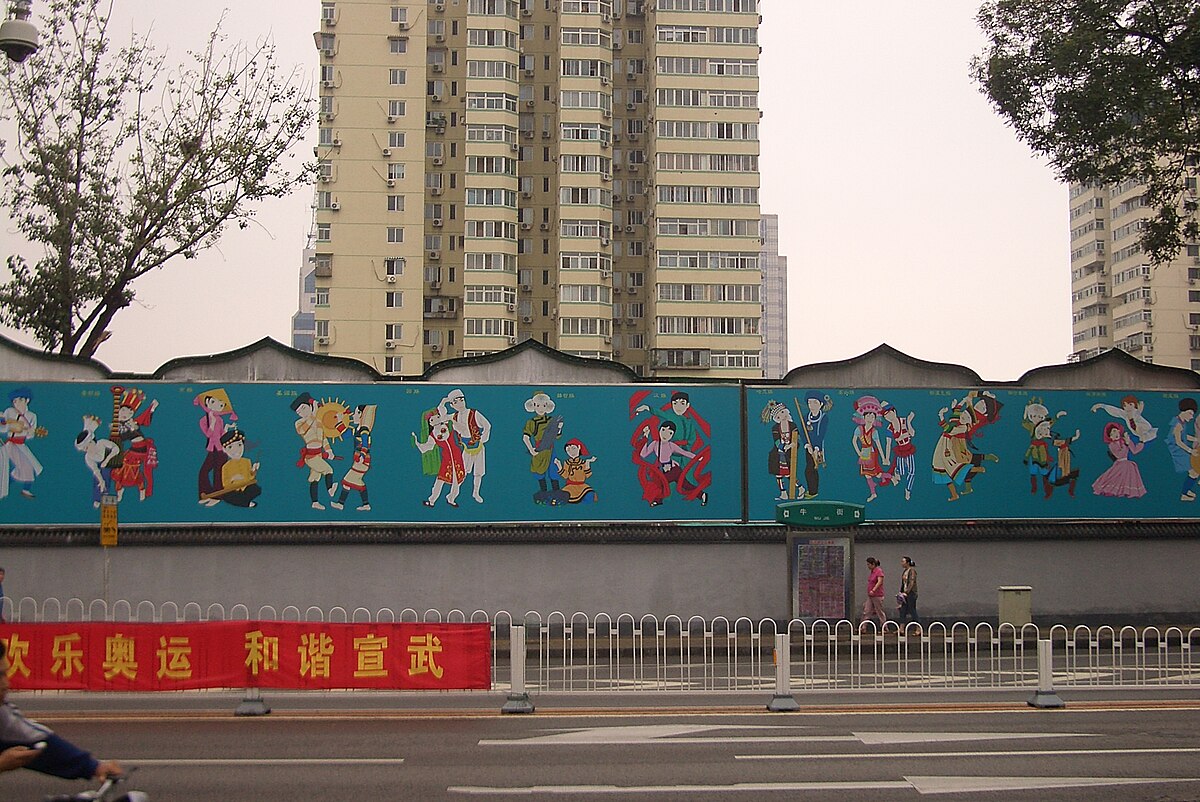 | ||
Multiple ethnic groups populate China, where "China" is taken to mean areas controlled by either of the two states using "China" in their formal names, the People's Republic of China (China) and the Republic of China (Taiwan).
Contents
- Ethnic groups recognized by the Peoples Republic of China
- Taiwanese aborigines
- Undistinguished ethnic minority groups
- Ethnic groups in Hong Kong and Macau
- References
The Han Chinese are the largest ethnic group, where (as of 2010) some 91.51% of the population was classified as Han Chinese (~1.2 billion). Besides the Han majority, 55 other ethnic groups are recognised in China by the PRC government, numbering approximately 105 million people, mostly concentrated in the northwest, north, northeast, south, and southwest but with some in central interior areas.
The major minority ethnic groups in China are Zhuang (16.9 million), Uyghur (11.5 million), Hui (10.5 million), Manchu (10.3 million), Miao (9.4 million), Yi (8.7 million), Tujia (8.3 million), Tibetan (6.2 million), Mongol (5.9 million), Dong (2.8 million), Buyei (2.8 million), Yao (2.7 million), Bai (1.9 million), Korean (1.8 million), Hani (1.6 million), Li (1.4 million), Kazakh (1.4 million), and Dai (1.2 million).
Ethnic groups recognized by the People's Republic of China
In order of population, this is the list of the 56 ethnic groups in China that are officially recognized by the government of the People's Republic of China. The number of officially recognized ethnic groups in China used to be 39 in 1954, which increased to 54 by 1964. The last change was the addition of the Jino people in 1979, bringing the number of recognized ethnic groups to the current 56.
AGB 3304-91 "Names of nationalities of China in romanization with codes";
BThe population only includes China and the Republic of China (Taiwan);
CFor ethnic groups officially recognised in 1964 or earlier, this is the year of first inclusion in the national census, which were in 1954 and 1964;
1Also included are the Chuanqing;
2Also includes Utsuls of Hainan, descended from Cham refugees;
3A subset of which is also known as Hmong;
4including Amdowa and Khampa, as well as roughly half of Pumi speakers, the remainder of whom are classified as a separate Pumi ethnicity;
5Also known as Kam;
6Also included are the Sangkong;
7This category includes several different Tai-speaking groups historically referred to as Bai-yi;
8Also included are the Mosuo;
9Also included are the 木佬人 (Qago);
10Known as Kachin in Myanmar;
11Also included are the Then;
12Actually not Tajik people but Pamiri people;
13The same group as Vietnamese or Kinh people in Sino-Vietnamese;
14Known as Palaung in Myanmar;
15The same group as Nanai on the Russian side of the border;
16A collective name for all Taiwanese aborigine groups in Taiwan.
Taiwanese aborigines
The People's Republic of China government officially refers to all Taiwanese aborigines as Gaoshan (Chinese: 高山族; pinyin: Gāoshānzú), whereas the Republic of China (Taiwan) recognizes 16 groups of Taiwanese aborigines. The term Gaoshan has a different connotation in Taiwan than it does in mainland China. While several thousands of these aborigines have migrated to Fujian province in mainland China, most remain in Taiwan. Due to the contested political status and legal status of Taiwan, the PRC classification of Taiwanese aborigines may be controversial.
Taiwanese Han "blood nationalists" have in the past claimed that they have Plains Aboriginal ancestry in order to promote Taiwan independence, claiming an identity different from that of mainland Chinese. However, genetic tests showed differences between them and plains aborigines, and given that they usually were recent migrants, their claims were rejected by descendants of Taiwanese Plains Aborigines.
"Undistinguished" ethnic minority groups
This is a list of ethnic groups in China that are not officially recognized by the government of the People's Republic of China.
During the Fifth National Population Census of the People's Republic of China (2000), 734,438 persons in the Chinese mainland, 97% of them in Guizhou, were specifically recorded as belonging to "Undistinguished ethnic groups". Presumably, other members of such groups may have been counted within larger "recognized" groups.
The various Han Chinese subgroups, such as Hakka people and Cantonese people are all considered just Han by the PRC government.
Ethnic groups in Hong Kong and Macau
Hong Kong and Macau are special administrative regions of the People's Republic of China. The governments of Hong Kong and Macau do not use the official PRC ethnic classification system, nor does the PRC's official classification system take ethnic groups in Hong Kong and Macau into account. As a result, minority groups such as Europeans (mainly English), and South or South East Asians (mainly Filipinos, Indian, Indonesians, Nepalese and Pakistani) live in Hong Kong.
